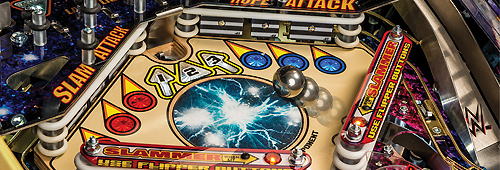For any of you serious techies out there, here is an article going over the new Stern Spike system and how it differs from their older SAM system.
Advanced networks make pinball games pop!
May 6, 2015 Editor : 0 Comments
by Paul Mandeltort, Director, Parts and Accessories, Stern Pinball, Inc.
Traditional pinball machines are using industrial sensor buses to bring body table games into the 21st century.
Suppose you traveled back to the year 1982, found a pinball technician at a bustling arcade, and showed him/her a 2015-era pinball machine. The technician would recognize a familiar sight—hundreds of solenoids, actuators, sensors and lights all connected using bundles of discrete wires to a central control system. That’s because aside from peripheral device improvements—such as replacing incandescent bulbs with LEDs, incrementally upgrading microcontrollers, and adopting updated score display technologies—the core architecture of pinball control systems has been practically frozen in time since the 1980s. The last big change in pinball design was the introduction of electronics in the 1970s.
Technology has marched on. There has been a recent explosion of pinball machine popularity driven by a new generation of casual players, competitive tournament players and seasoned home collectors. Today, companies are finally re-inventing the core architecture of pinball. The reason: a shift in customer demand from single standardized games to a diverse spectrum ranging from simple casual-play games to complex limited-edition collector games.
For example, pinball machine manufacturer Stern Pinball realized that a varied product line of this sort demanded a different mix of inputs and outputs (I/O). Moreover, Stern could see challenges adapting its 1990s-era fixed I/O count architecture across this new spectrum of products. Simpler games had dozens of unused I/O which drove up unit costs, and more complex games needed expensive I/O additions, lengthening development time and limiting features that designers wanted to implement.

On the other hand, many industries have reaped rewards from modular embedded network architectures. Stern realized that all pinball machines have a similar set of embedded control problems that could be addressed with inexpensive embedded network systems such as CANbus used in the automotive industry. Thus, embedded network systems looked like a way to address problems of cabling complexity, development speed, I/O count flexibility, part obsolescence protection and overall product cost.
This was the environment that gave rise to a pinball control system, dubbed SPIKE. The first game to use it is called WWE Wrestlemania, debuting in early 2015. The pinball control system features a custom embedded network node bus, a custom embedded Linux-based software stack, and a 48-V embedded power distribution system.
For the rest of the article, you can read it here:
http://www.designworldonline.com/advanced-networks-make-pinball-games-pop/
Advanced networks make pinball games pop!
May 6, 2015 Editor : 0 Comments
by Paul Mandeltort, Director, Parts and Accessories, Stern Pinball, Inc.
Traditional pinball machines are using industrial sensor buses to bring body table games into the 21st century.
Suppose you traveled back to the year 1982, found a pinball technician at a bustling arcade, and showed him/her a 2015-era pinball machine. The technician would recognize a familiar sight—hundreds of solenoids, actuators, sensors and lights all connected using bundles of discrete wires to a central control system. That’s because aside from peripheral device improvements—such as replacing incandescent bulbs with LEDs, incrementally upgrading microcontrollers, and adopting updated score display technologies—the core architecture of pinball control systems has been practically frozen in time since the 1980s. The last big change in pinball design was the introduction of electronics in the 1970s.
Technology has marched on. There has been a recent explosion of pinball machine popularity driven by a new generation of casual players, competitive tournament players and seasoned home collectors. Today, companies are finally re-inventing the core architecture of pinball. The reason: a shift in customer demand from single standardized games to a diverse spectrum ranging from simple casual-play games to complex limited-edition collector games.
For example, pinball machine manufacturer Stern Pinball realized that a varied product line of this sort demanded a different mix of inputs and outputs (I/O). Moreover, Stern could see challenges adapting its 1990s-era fixed I/O count architecture across this new spectrum of products. Simpler games had dozens of unused I/O which drove up unit costs, and more complex games needed expensive I/O additions, lengthening development time and limiting features that designers wanted to implement.

On the other hand, many industries have reaped rewards from modular embedded network architectures. Stern realized that all pinball machines have a similar set of embedded control problems that could be addressed with inexpensive embedded network systems such as CANbus used in the automotive industry. Thus, embedded network systems looked like a way to address problems of cabling complexity, development speed, I/O count flexibility, part obsolescence protection and overall product cost.
This was the environment that gave rise to a pinball control system, dubbed SPIKE. The first game to use it is called WWE Wrestlemania, debuting in early 2015. The pinball control system features a custom embedded network node bus, a custom embedded Linux-based software stack, and a 48-V embedded power distribution system.
For the rest of the article, you can read it here:
http://www.designworldonline.com/advanced-networks-make-pinball-games-pop/
